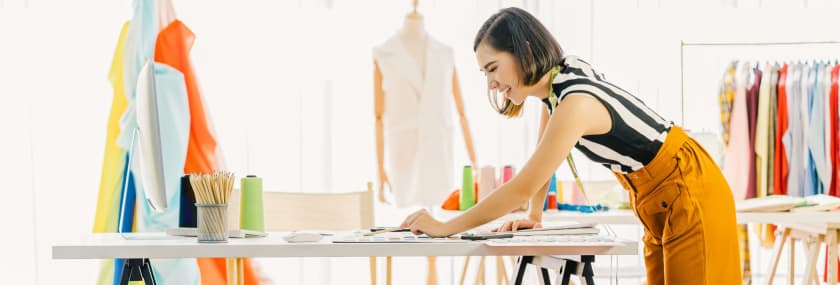How To Finance A Fashion Startup?



While getting an order from a major retailer may sound like a good thing for a budding brand, it differs from direct-to-consumer businesses. They’re typically unable to provide the necessary resources to start their businesses.
In 2018, many fashion designers had to consider various options for funding their businesses. From traditional methods like factoring to newer alternatives such as direct-to-consumer financing, here are the tried and tested solutions of the industry’s most notable brand founders.
A Few Ways To Finance Your Fashion Startup:

Friends and Family
Usually, a brand launches with a “friends-and-family round.” Here, you enlist the help of your family and friends to get the business off the ground.
Startup Loans
Whether from a person or a bank, opting for a loan means having a debt to pay back with interest every month. The startup loans prove a lot excruciating for small fashion businesses.
Private Equity
Private equity is a standard method used to fund fashion brands. The company may have to give away a small stake to the equity firm. The brands that offer this option have more experience but have not yet grown enough to launch an IPO.
Crowdfunding
Crowdfunding is a new and popular platform to gather small quantities of funding from a large group of people, usually using an online platform. Brands can use this to reach their customer base directly, create engagement with potential clients and get funding. Brands can set their crowdfunding goal amount based on what is needed to produce their line.
Side Hustle & Other Licensing Deals
Most designers consult, collaborate, and work for other brands to make more money while kick-starting their own business. Designers may also opt for licensing deals with existing brands. However, this requires some existing recognition to secure a deal.
Venture Capital
Venture capital helps you find an investor for your startup who believes that your company is promising and will grow in the long run. Also known as an angel investor, this individual gives support in the initial stage of the business and usually gets ownership equity in exchange. In simple words, the capitalist has some control over the company and the business decision involved to expand the brand.
Factoring
It is quite a common way to finance a startup that deals in wholesale. It is a method where brand access is given to some working capital or startup loans. When a company gets big orders from any popular brand, it has to manufacture and ship the orders to get money. This way, the designer runs out of available funds pretty quickly and leaves a low scope of profit. It is when a factor comes into action.
The factor provides 80% of the funding to the designer to complete the order. It collects the money directly from the retailers, and the other 20% remaining is paid to the designer. If the retailer denies payments, the factor ensures that the debts are paid off.
Factors of Expenses Brand Needs to Consider –

-Digital Marketing Cost
It is important to make a digital marketing budget to advertise your business or startup on several platforms.
-Photography Cost
It is a critical part of business branding. Don’t skip the expense of this factor. Most buyers rely on high-quality photographs to make a critical decision about your brand.
-Creating Samples
It is an expensive process, which must not be overlooked. It is something on which one must spend as much as required.
-Office Expenses and Printing Cost
These expenses can sneak up on you. So, plan these expenses in advance, and don’t go overboard, especially at the beginning of your brand establishment.
-Professional Help Cost
It is important to hire people to help you with the professional work, including finances, retail consultant, tax accountant, bookkeeper, and production consultant. Get a quote for these services to plan accordingly.
Conclusion
Select the financing option that most suits your startup.
Fashinza is a platform that helps companies to connect with other apparel manufacturing companies to produce their collection for brands. You can take a quick look at the website to learn more. Check it out now!



















